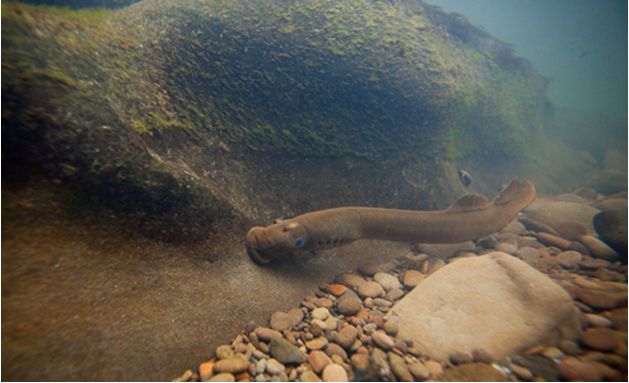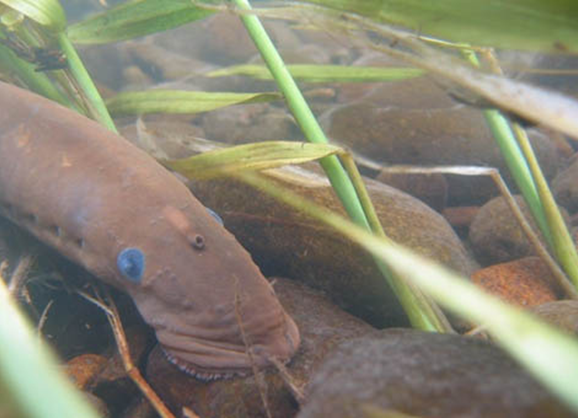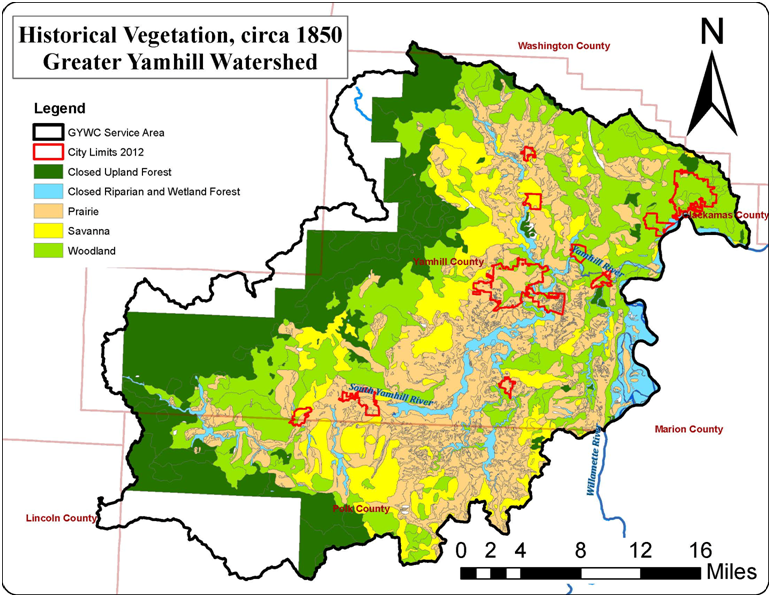Habitats and Land Use
Current Land Use
The landscape of Greater Yamhill Watershed is rich in diversity. Agricultural fields dominate the lower south and eastern portions, intermixed with lands along streams and wetlands. The western portion of the watershed is dominated by steep forestland, including historic oak woodlands and oak prairies.
Forest lands cover about 60% of the watershed, 30% grass seed, pasture, and hay land, and the remaining 10% is mostly grain crops, nurseries, vineyards, row crops, and urban areas.
There are more than 1,600 working farms and ranches in the watershed. Roughly 65% are less than 50 acres.
GYWC Focus Areas
Streams and Rivers
The GYW is one of the largest west-side tributary watersheds in the Upper Willamette River Valley. Nearly 430 miles of our streams and rivers are designated by Oregon Department of Fish Wildlife as essential and/or critical habitat for imperiled winter steelhead trout. Studies conducted over the last five years estimate that the Yamhill River Watershed receives about 4% of the winter steelhead trout returning upstream of the Willamette Falls each year.
In addition, ODFW studies conducted in 2009 and 2014 indicate that the Yamhill River Watershed may support the largest population of naturalized Coho salmon (38-48%) in the Upper Willamette River. In fact, Agency Creek alone has been documented to receive about 4% of this Coho salmon run each year.
Furthermore, studies conducted between 2006 and 2012 have shown that the Yamhill River Watershed may also play a significant role for imperiled Pacific lamprey eels in the Upper Willamette River. Pacific lamprey is an old, old fish—one that dates back 500 million years! Pacific lamprey are anadromous fish species, which spend their adult life at sea and breed in freshwater. Pacific lamprey are an amazing and unique fish species with particularly significant cultural value to our tribal partners.


Let’s work together to make our streams and rivers safe for our salmon, trout, and lamprey! Visit our Volunteer or Fish Habitat sections to learn how you can help us monitor the distribution and abundance of these fish species and work with us to improve their habitat.
Oak Savanna and Grassland Prairies
In the 1850’s, government surveys documented about 1 million acres of the Willamette Valley were grassland prairies and over 400,000 acres contained oak. Locally, these habitats covered about 30% of the Greater Yamhill Watershed. Studies indicate that prairie and savanna habitats have existed in the Willamette Valley for more than 6,000 years and may have become established at a time when the climate was warmer and drier than today. Records also show that the Kalapuya Indians, the Willamette Valley’s native tribes, maintained these habitats through the use of frequent, low-intensity fires that eliminated woody vegetation and maintained open grasslands and oaks with large crowns. These habitats provided essential resources for local tribes who relied on native plants and game for sustenance and economy.
Recent studies of the Willamette Valley show that the once 1 million acres of prairie and savanna have been reduced to only 10,000 acres, which is less than 1% of the historic extent. Locally, the Greater Yamhill Watershed has the highest number of acres of historic prairie and savanna of any watershed in the Willamette Valley. Since enhancing and protecting existing prairie and savanna is much more feasible than recreating these habitats, the Greater Yamhill Watershed is a priority area for local, statewide, and national watershed improvement efforts. In addition, these habitats are a key focus for local tribes who value the cultural and natural benefits of prairies and savannas.
Because oak savanna and grassland prairies were once a major component of the Greater Yamhill Watershed they provided habitat for a great diversity of plants and wildlife, many of which are now imperiled due to habitat loss. In fact, studies show that over 200 species of native wildlife rely on these habitats, including Oregon’s state bird the western meadowlark, fender’s blue butterfly, acorn woodpeckers, western gray squirrels, and various species of owls and bats.



